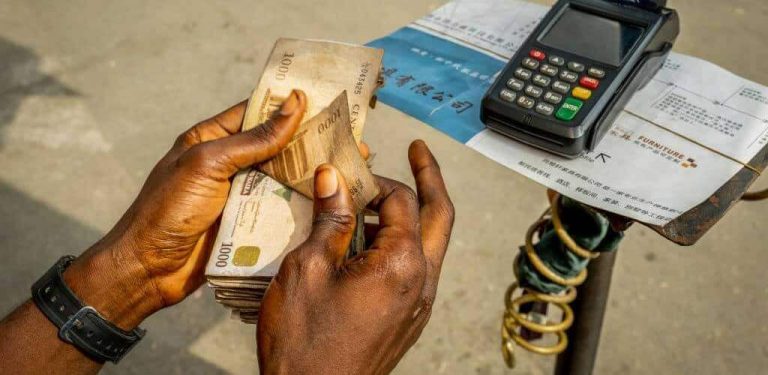
Nigeria’s money supply (M2) hit a historic peak of N107.1 trillion in August 2024, reflecting a 0.75% month-on-month rise from July’s figure of N106.3 trillion and a more substantial 5.6% increase from N101.4 trillion in June.
The surge, reported by the Central Bank of Nigeria (CBN), has heightened concerns about liquidity and inflation management, as policymakers grapple with maintaining a delicate balance between fostering economic growth and controlling price hikes.
This jump represents a staggering 65% year-on-year increase, with M2 climbing from N64.8 trillion in August 2023. The surge is primarily driven by quasi-money (savings, term deposits) and demand deposits, which have seen significant rises of 77% and 43%, respectively. Both components are influenced by the devaluation of the naira against foreign currencies, underscoring the deep impact of Nigeria’s volatile foreign exchange market on domestic money supply.
Register for Tekedia Mini-MBA edition 19 (Feb 9 – May 2, 2026): big discounts for early bird.
Tekedia AI in Business Masterclass opens registrations.
Join Tekedia Capital Syndicate and co-invest in great global startups.
Register for Tekedia AI Lab: From Technical Design to Deployment (next edition begins Jan 24 2026).
Components Driving the Surge
The money supply encompasses currency in circulation, demand deposits, and quasi-money, all of which signal the growing liquidity in Nigeria’s financial system. By August 2024, currency outside banks reached N3.8 trillion, demand deposits hit N31 trillion, and quasi-money ballooned to N72.2 trillion, all of which are symptomatic of the country’s mounting liquidity despite the CBN’s efforts to tighten monetary policy.
A significant driver behind this expansion has been the rise in forex-related components within quasi-money and demand deposits, particularly as individuals and corporations have sought to hedge against the naira’s devaluation by holding foreign currencies.
Defying Tighter Monetary Policy
In its September 2024 meeting, the CBN’s Monetary Policy Committee (MPC), chaired by Governor Olayemi Cardoso, raised alarm over the unchecked rise in money supply and its potential to stoke inflation. In response, the MPC made a significant move to curb excess liquidity, voting to raise the Monetary Policy Rate (MPR) by 50 basis points to 27.25%. This marked a continuation of the CBN’s tightening stance, aimed at containing inflationary pressures.
The committee also adjusted the Cash Reserve Ratio (CRR) for Deposit Money Banks, raising it by 500 basis points to 50%, while the CRR for Merchant Banks was increased by 200 basis points to 16%. These measures are intended to limit the liquidity available for lending, in a bid to cool off demand-side pressures in the economy.
In addition, the MPC acknowledged the government’s fiscal deficit but praised its commitment to avoiding monetary financing through the Ways and Means channel, which could inject further liquidity into the economy and worsen inflation.
Despite the central bank’s efforts, inflationary pressures have continued to threaten economic growth. Headline inflation eased slightly to 32.15% in August, thanks to a moderation in food prices. However, core inflation, which excludes volatile food and energy prices, remains stubbornly high, driven largely by surging energy costs. This persistent inflation has created a dilemma for the CBN, as it seeks to balance inflation control with the need to support economic recovery.
The MPC made a fresh decision to hike rates to curtail the pace of inflation. However, the rising money supply complicates these efforts, as higher liquidity can spur demand in an economy where production remains constrained. Economists note that if the supply of goods and services does not keep pace with rising demand, prices could continue to climb, undermining the CBN’s efforts to stabilize inflation.
Implications of Rising Money Supply
The growing money supply has mixed implications for Nigeria’s economy. On one hand, increased liquidity can provide a short-term boost by making credit more accessible to businesses. This, in turn, can drive investment, job creation, and production, contributing to economic growth. On the other hand, excessive money supply growth, without a corresponding rise in productivity, risks fueling inflation, particularly in an economy already grappling with price instability.
Economic analysts have raised concerns about the risks posed by the rapid increase in money supply. According to financial analyst Kalu Aja, “The issue is not the N107 trillion; the problem is that nothing is being produced with that N107 trillion.”
He explained that wealthier individuals and businesses are converting naira earnings into foreign currency, while those less well-off are forced to buy increasingly expensive goods with a depreciating currency.
Aja’s analysis underlines a broader concern about Nigeria’s economic structure. “The solution,” he argued, “is to make manufacturing great again in Nigeria, reduce the cost of local production, and improve local productivity.”
If local production can be increased, Aja suggests, it could absorb the excess liquidity in the system and help stabilize prices.
It is believed that efforts to tackle rising inflation have failed because Nigeria’s policymakers face the challenge of managing an ever-growing money supply in a high-inflation environment. Experts have noted that while monetary tightening measures like interest rate hikes and increased CRR can help absorb some of the excess liquidity, these policies alone may not be enough to address the underlying structural issues in the economy.
In addition to boosting local production, economists have emphasized the need for significant reforms, including addressing infrastructure deficits, reducing the cost of doing business, and improving the overall investment climate. Without these reforms they said, the risk remains that the rising money supply will continue to outstrip production, leading to further inflationary pressures.



